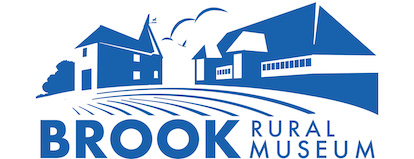Brook Rural Museum was delighted to join Christ Church University in jointly hosting Dr Adam Chapman who delivered the annual Michael Nightingale Memorial lecture at Christ Church on 26 September. Dr Sheila Sweetinburgh who is both a trustee of the museum and co-director of Christ Church’s Centre for Kent History and Heritage provided the following account of the wonderful lecture on her regular blog:
In introducing Dr Adam Chapman, the general editor, it was good to acknowledge the work of the Victoria County History (VCH as it is generally known), albeit Kent compared to some counties only has a small number of volumes. In part for this reason Adam took his audience on a tour of England to demonstrate how the different VCH projects use a range of visual and textual evidence to study parishes as the basic unit of analysis. This major undertaking, which was initially expected to take about 6 or 7 years to encompass all the counties of England has so far yielded 247 ‘big red books’ and 19 of the ‘shorter’ volumes, of which there are two of each for Kent.
To begin his tour, Adam started by exploring the adjacent Somerset parishes of Dunster, Minehead and Carhampton taking as his base the medieval landscape and examining those who had authority through their landholding, buildings of authority – castles, and places of trade – ports. As he said, for Dunster castle it is amazingly helpful for the historian that this barony has only been held by two families over time, they have been excellent keepers of their own archives and these archives are amazingly well catalogued. In contrast Carhampton, possibly an ancient Roman estate, from the 8th century was in the hands of the king and as a royal estate was where the medieval sheriff held his court. Nevertheless, it would be Minehead on the coast that was to develop and overtake its neighbours through its port and the trade in wool and then cloth. Equally from documentary records it is clear that Minehead was booming in the 1330s, every scrap of land in use, but a similar survey from the 1360s shows an abandonment of the poor agriculturally north coastal strip, this area becoming little more than rough grazing for sheep.
Keeping with Somerset and the theme of the impact of the Black Death on the landscape, Adam took his audience to North and South Cadbury where an Inquisition Post Mortem from 1349 records that these areas were worth nothing to the manorial lord because all the tenants were dead. Then adding to such textual evidence maps, aerial photos and archaeology can bring together this lost pre-Black Death landscape with its numerous tofts and how in the later period the village shrank, the old tofts fossilized in the landscape.
Adam also demonstrated how man-made influencing such as the colonisation of a parish or area by a religious house might also produce what first appears to be a deserted landscape. His example was the activities of the Cistercian monks of Bruern abbey in the Cotswolds. As elsewhere, the Cistercians with their deployment of lay brethren to run their sheep enterprises meant that the villagers were replaced by these lay brothers based on two farmers, another medieval landscape that can be read using documentary and other sources.
Moving north, Adam offered further case studies from Leicestershire and Westmorland before coming back south to Essex and lost landscapes under the sea, as at Walton-Le-Soken. This brought him to Kent, and he speculated how a study of say the Isle of Sheppey might work well in VCH terms. For there are a number of interesting features such as place name features, the role of livestock management, topographical features, the place of Minster as an early ecclesiastical centre, Queenborough as a royal planned town with early artillery fort, and the location of the island’s manors and villages.
Adam’s talk generated several questions from the enthusiastic audience of staff, students, Trustees and the public before I called on John Nightingale to give the vote of thanks and the event drew to a close with a voluntary retiring collection – thanks to the audience for continuing to support the work of the Museum and the Ian Coulson Award Fund.


